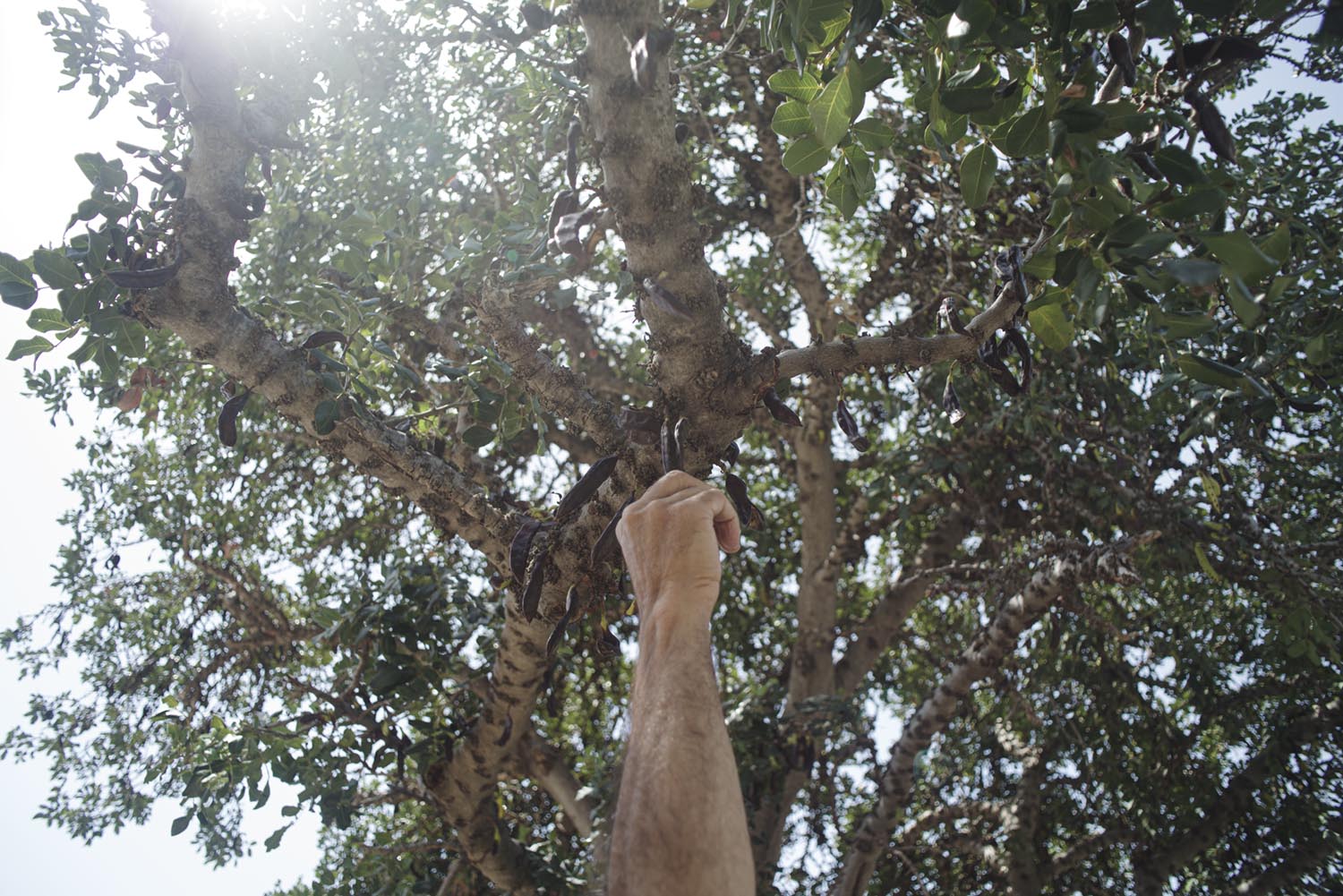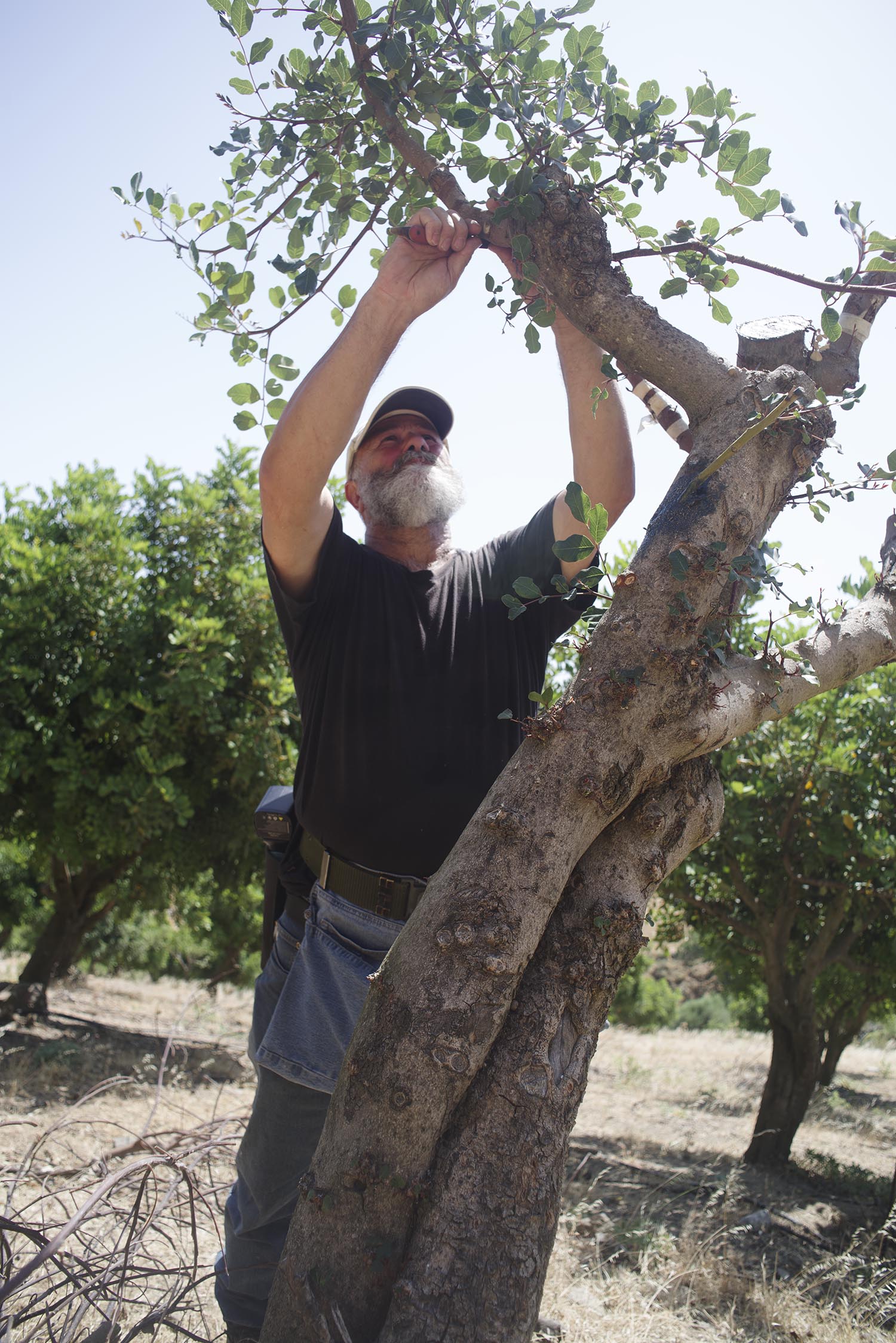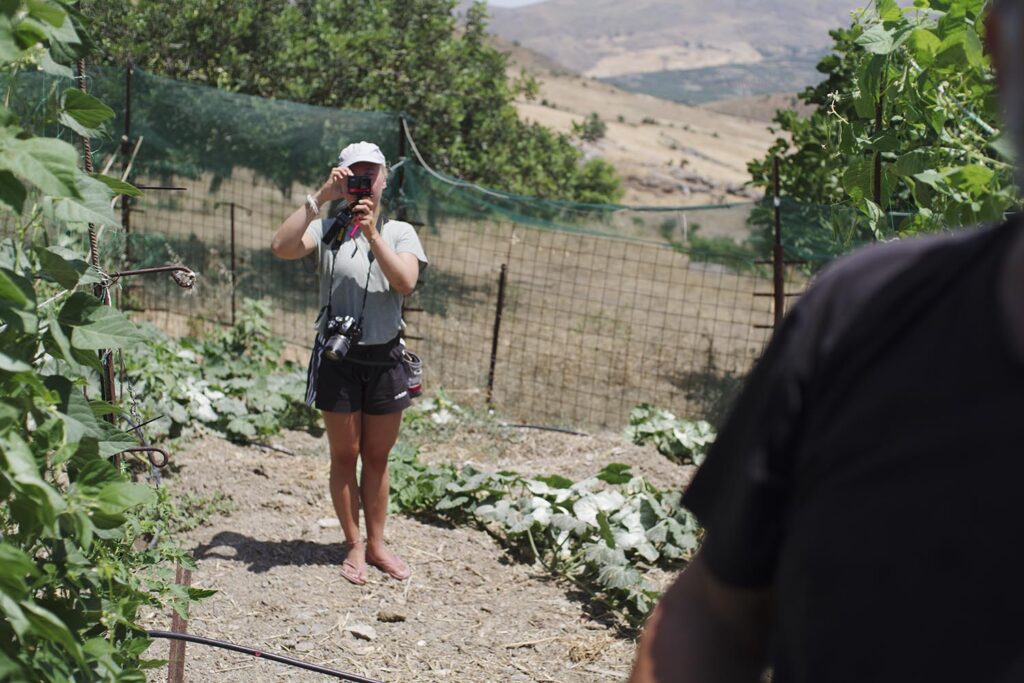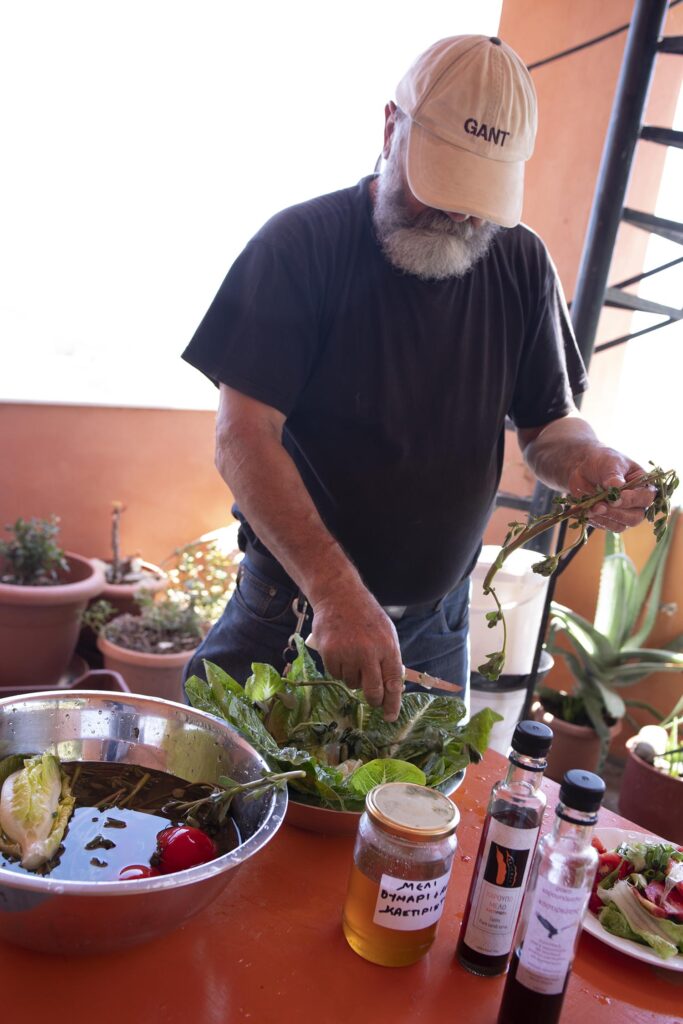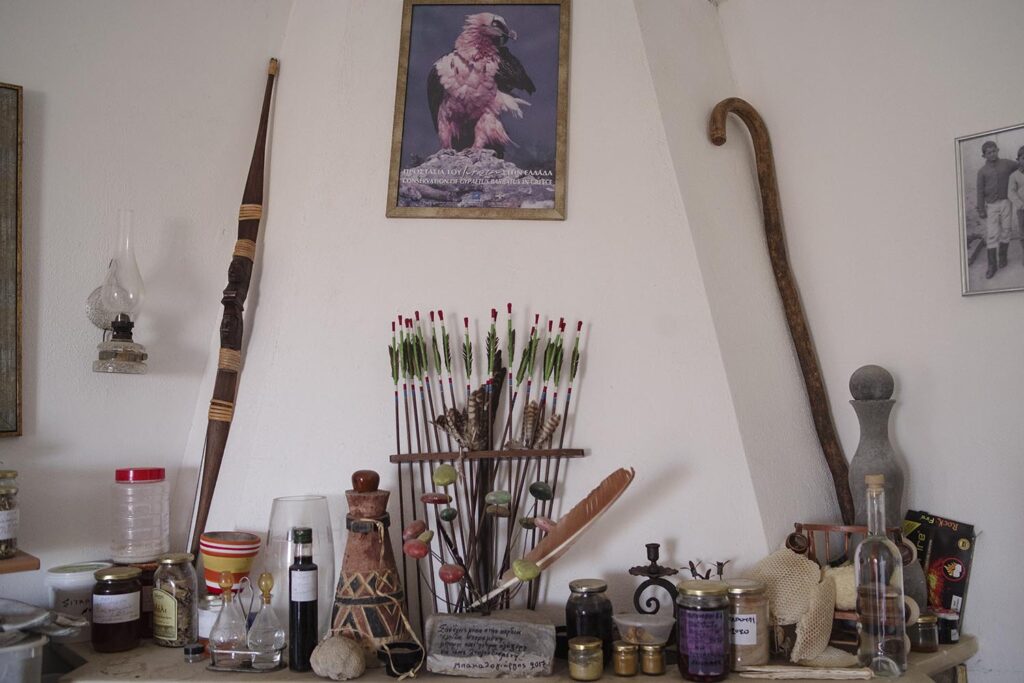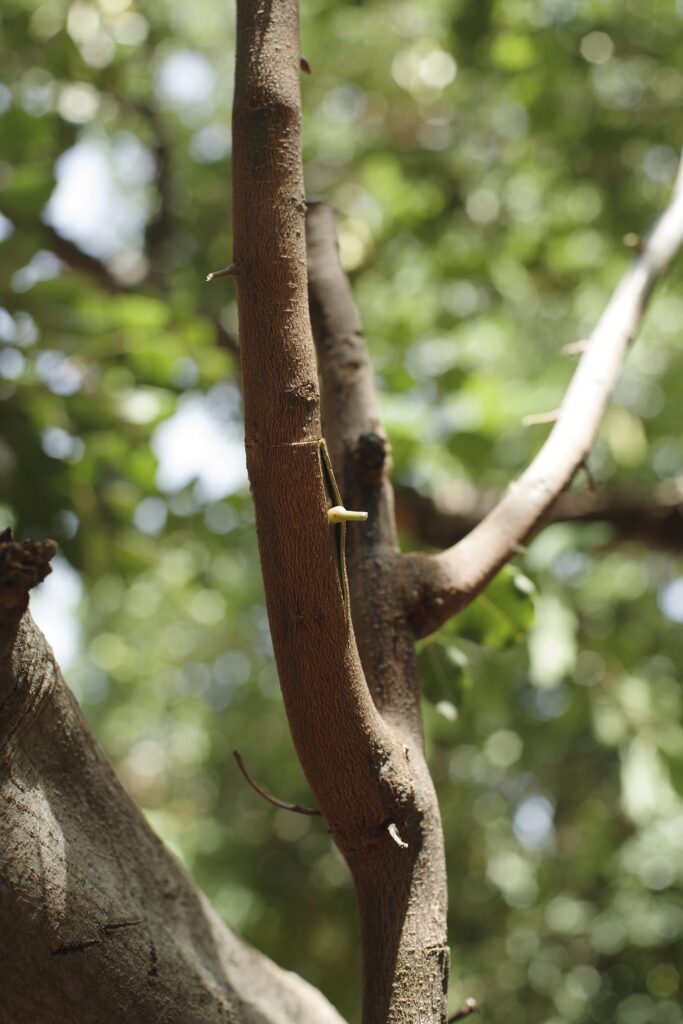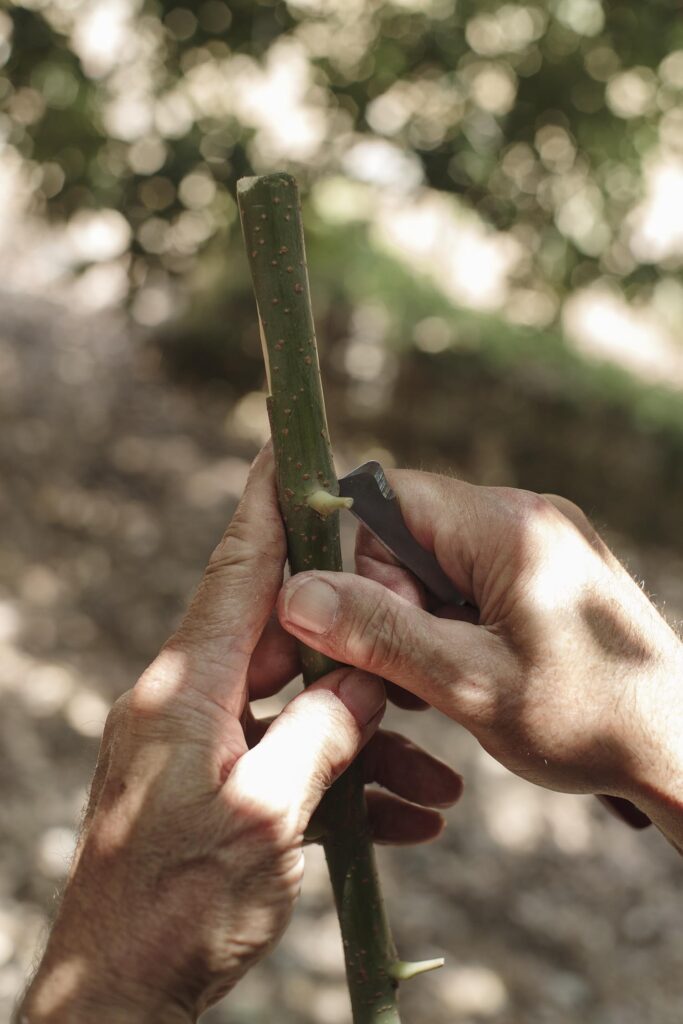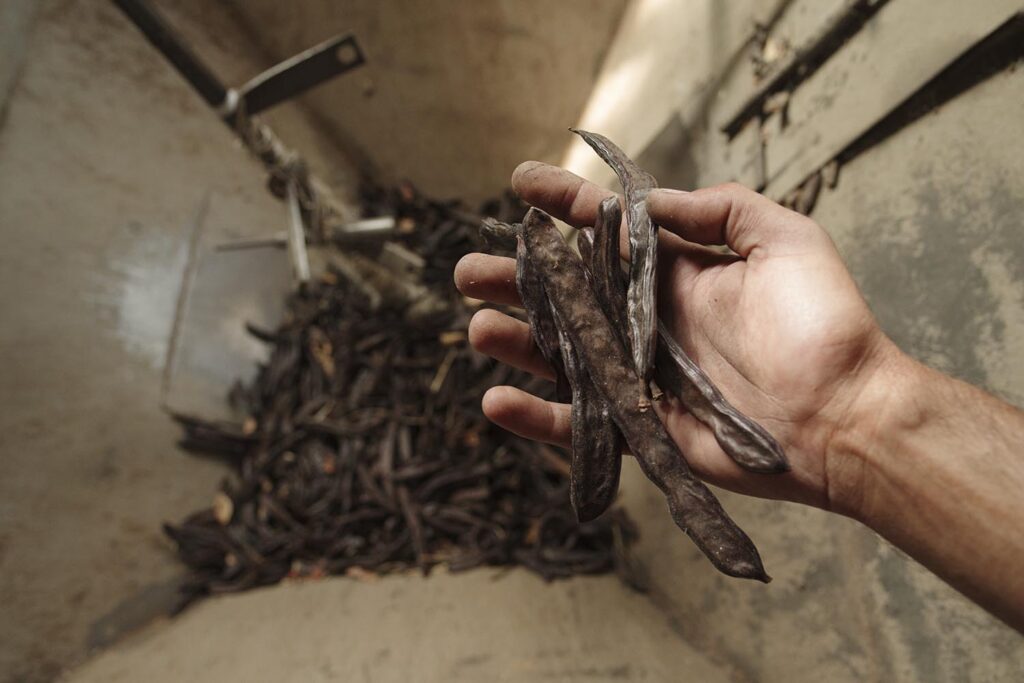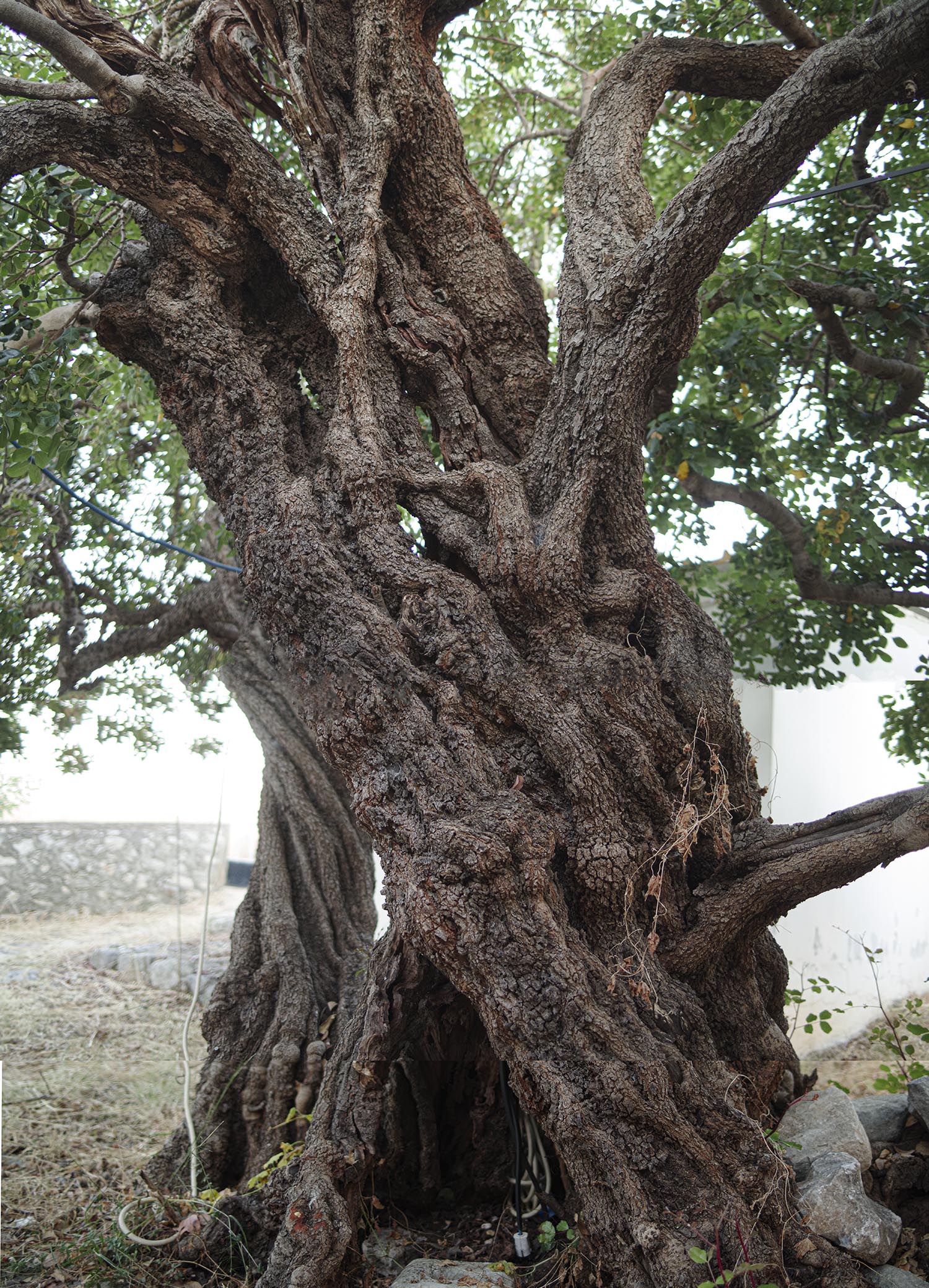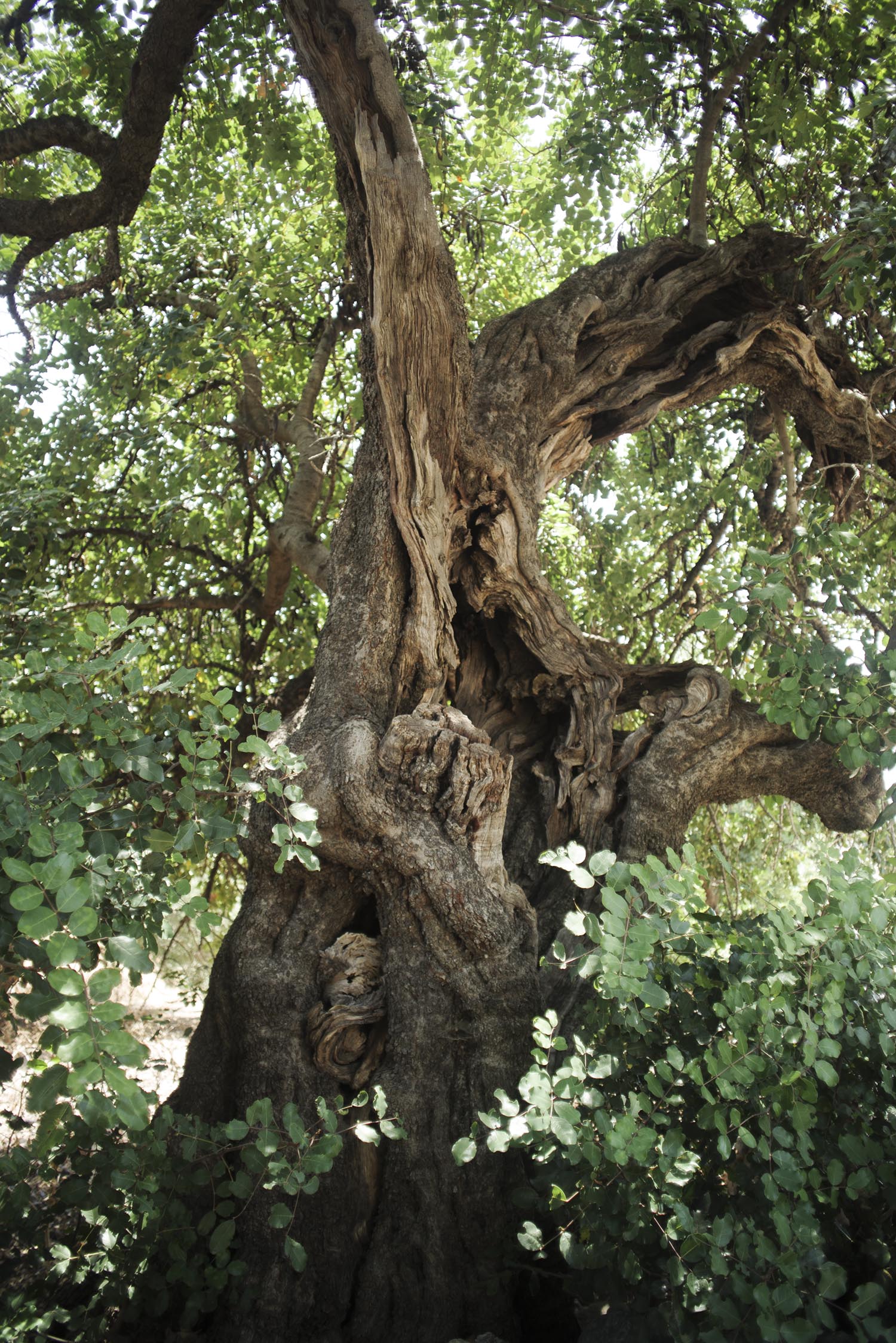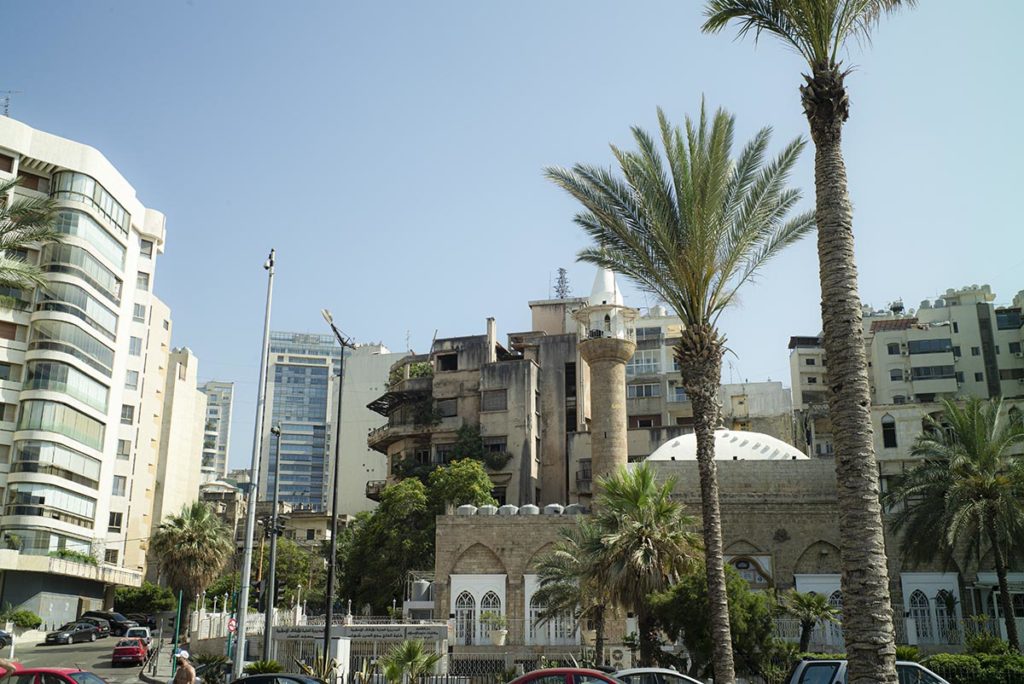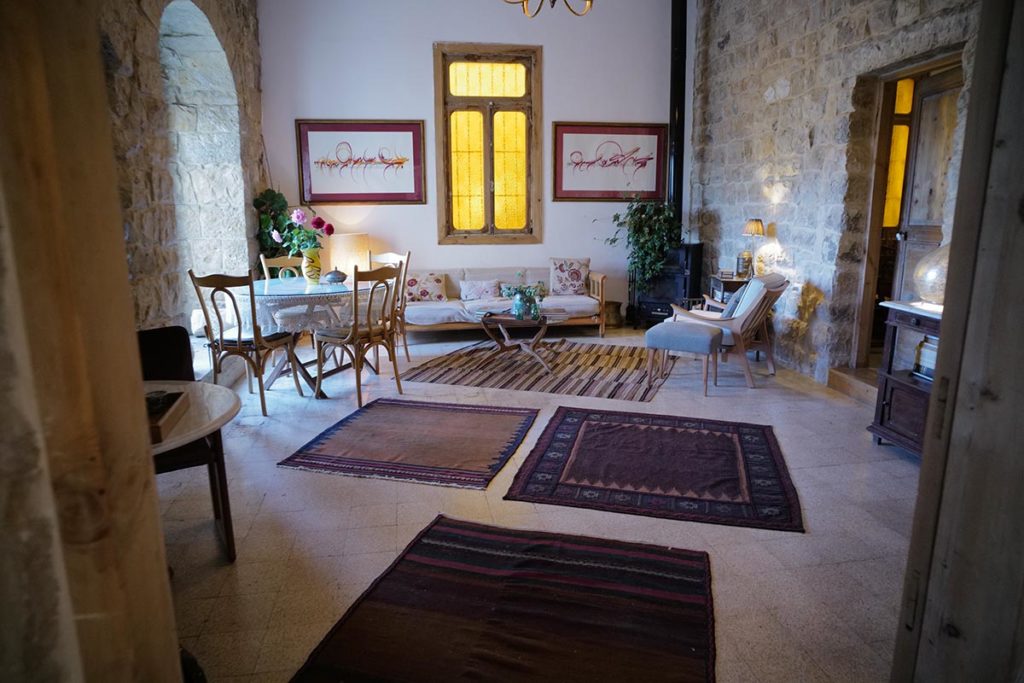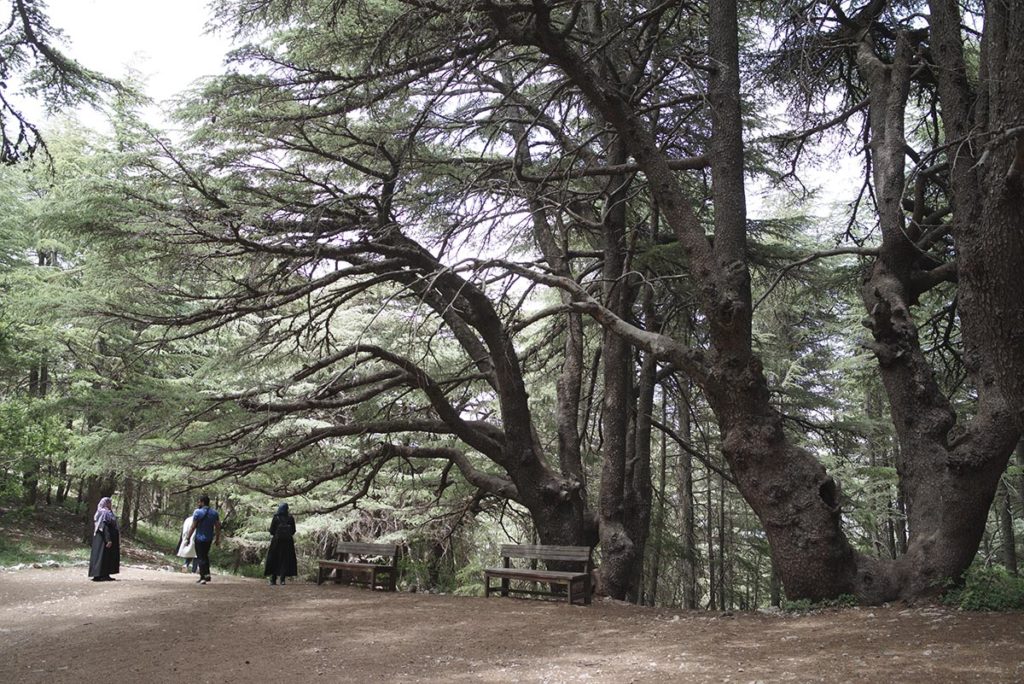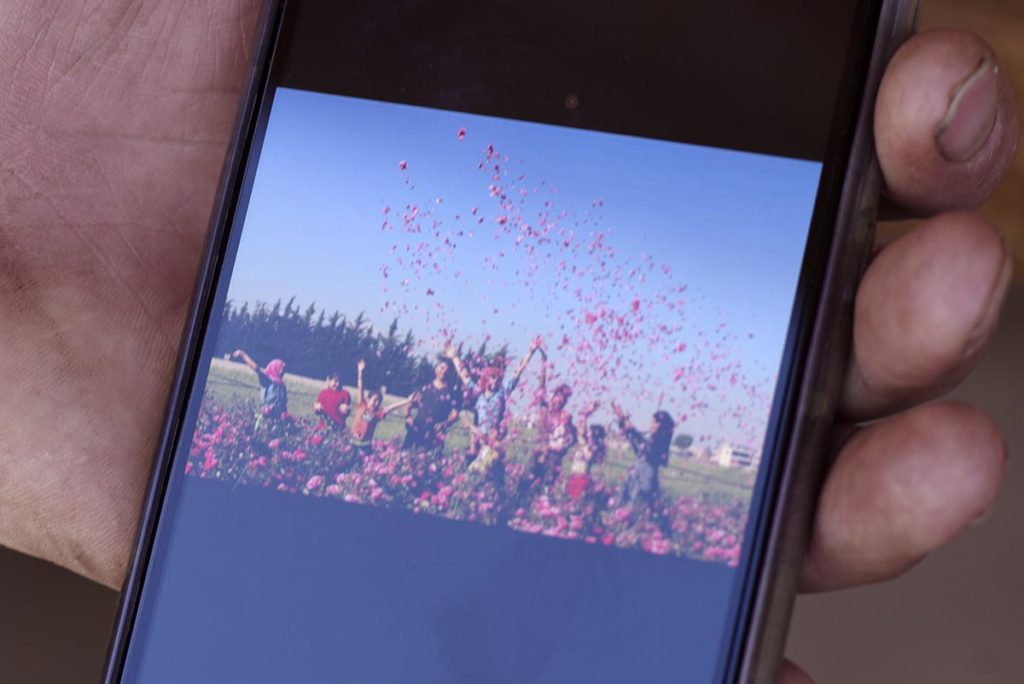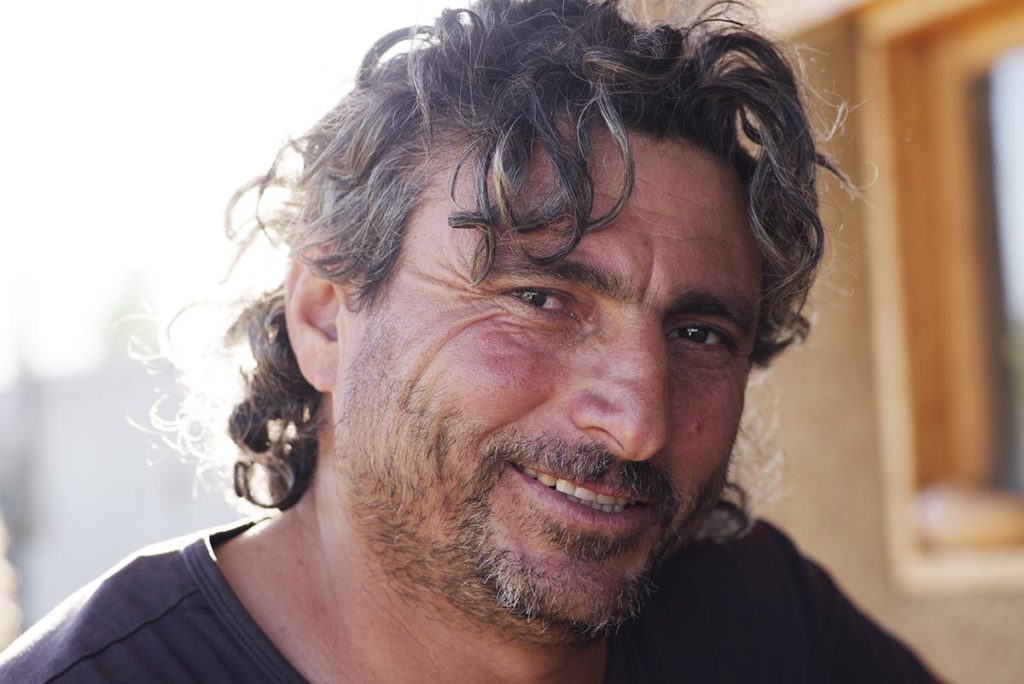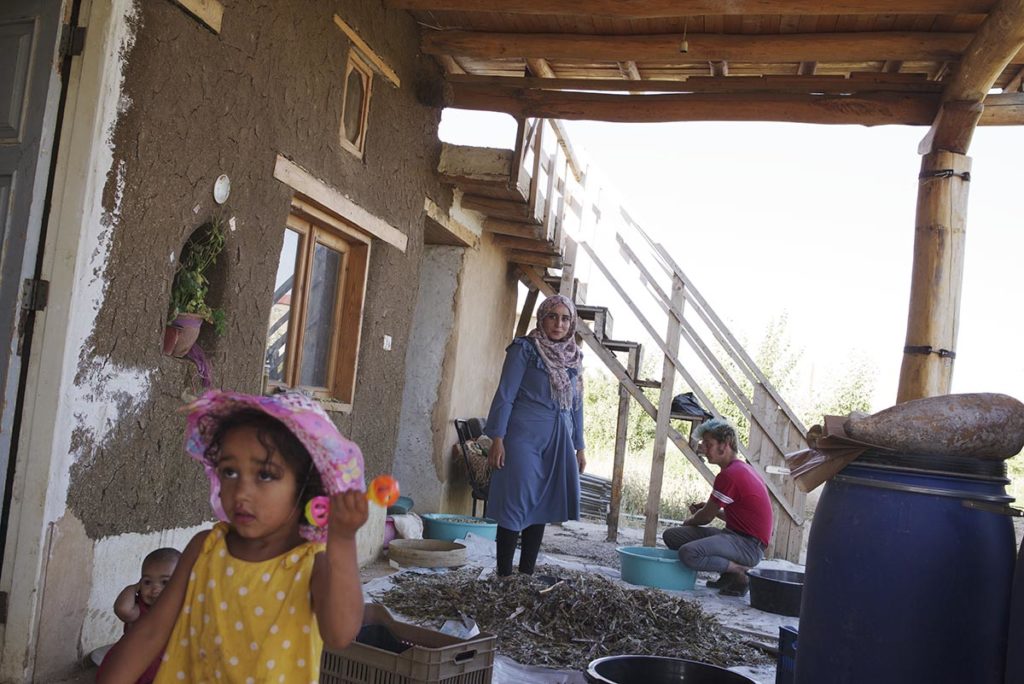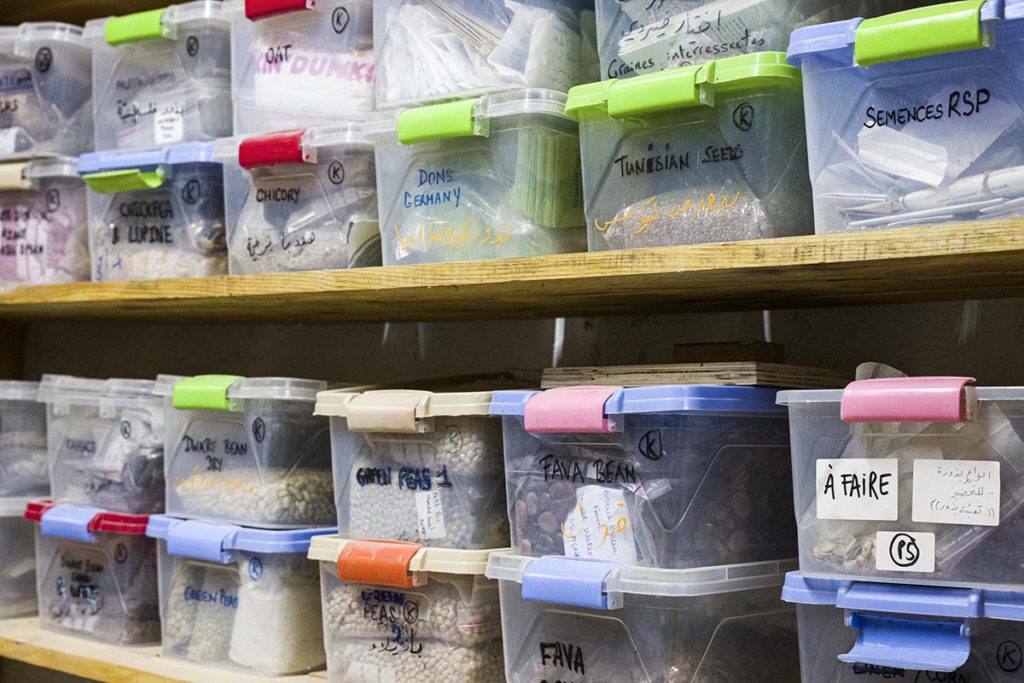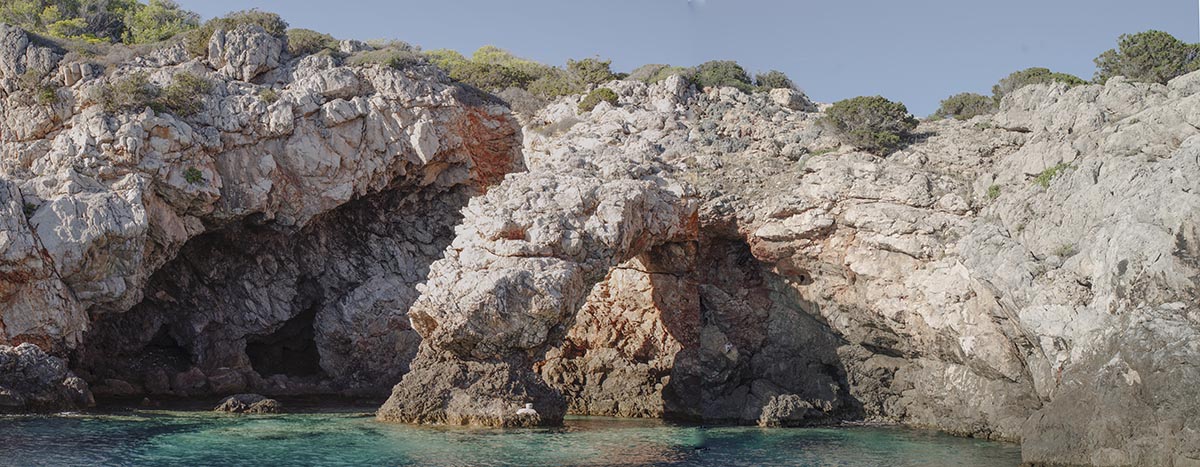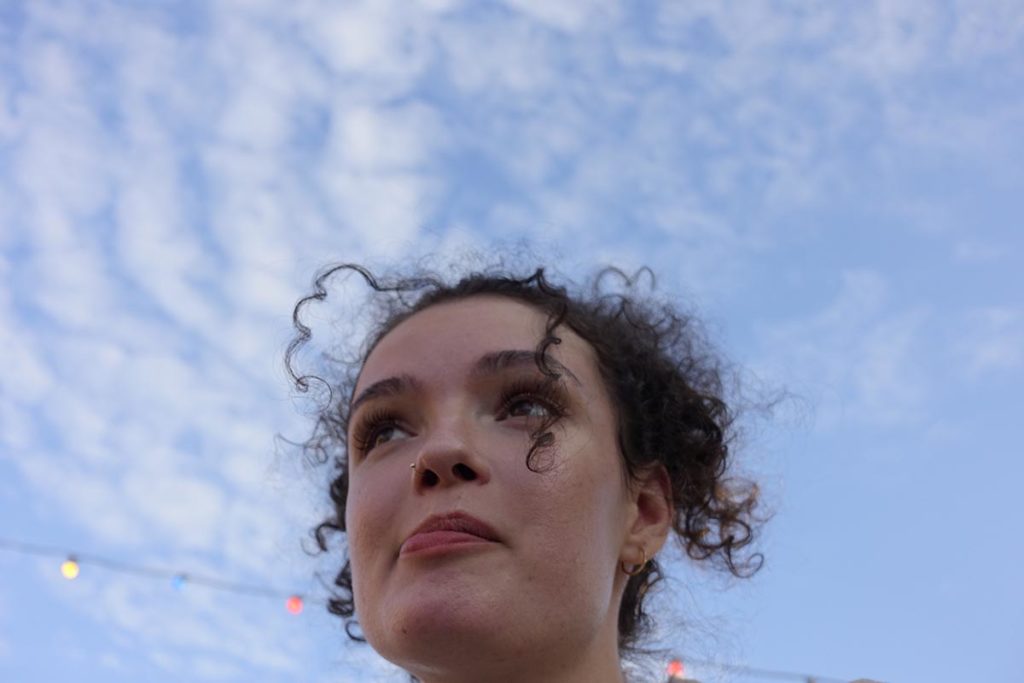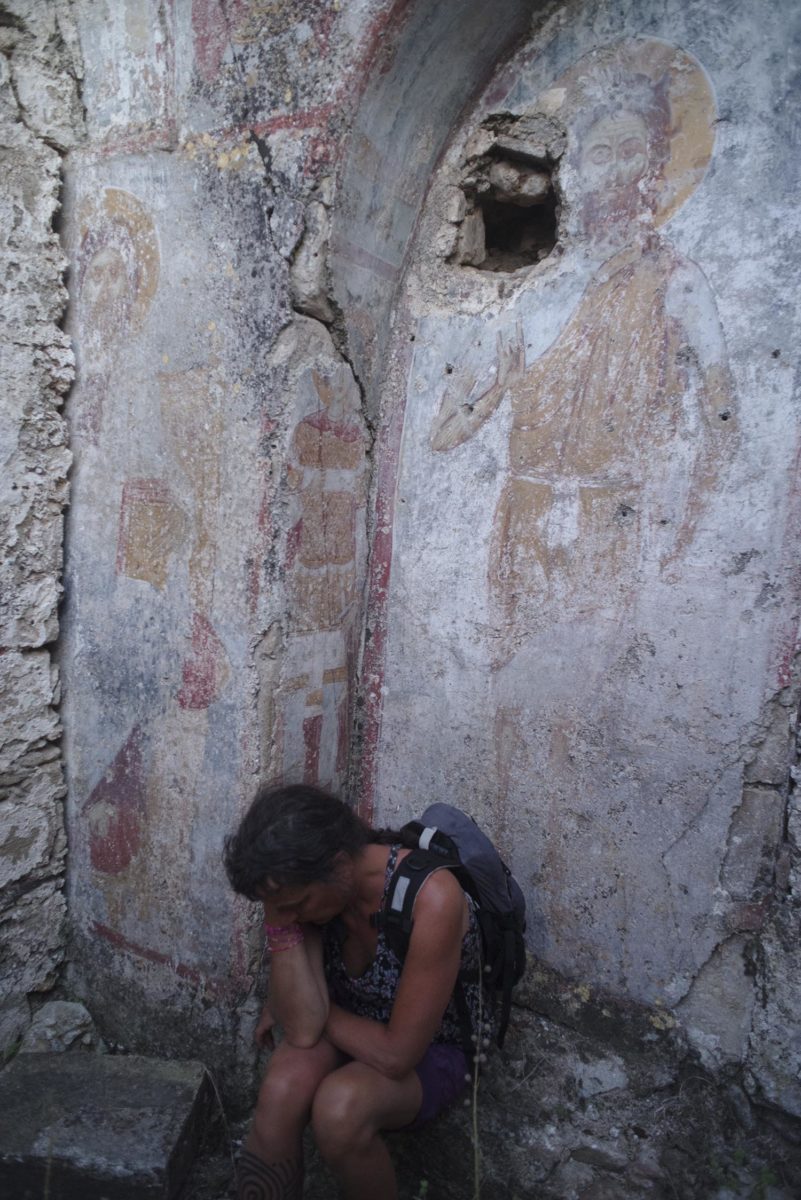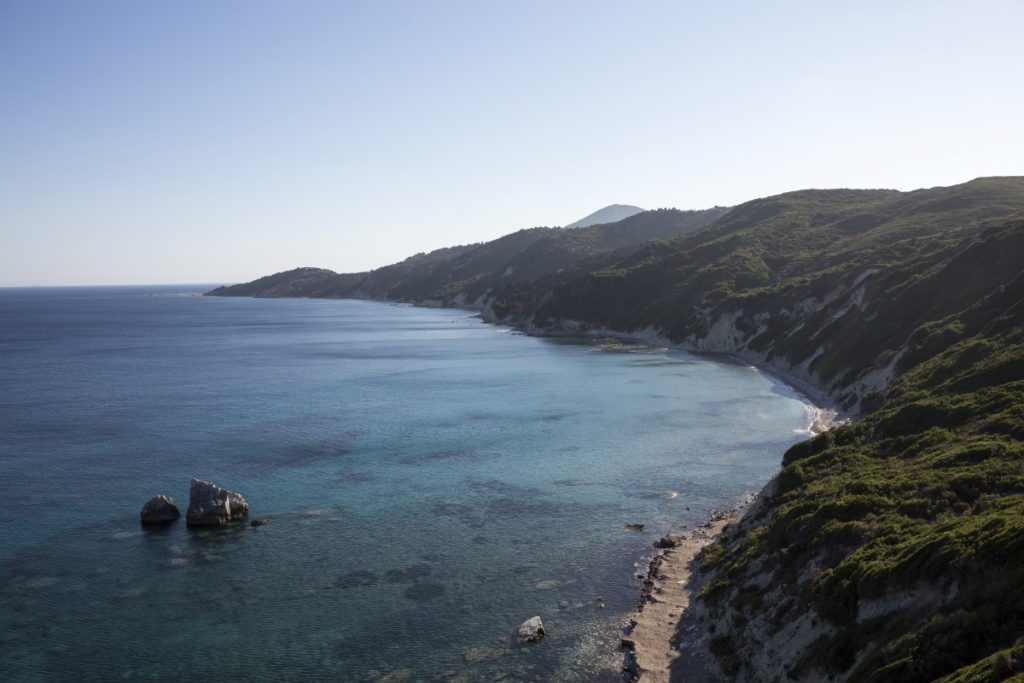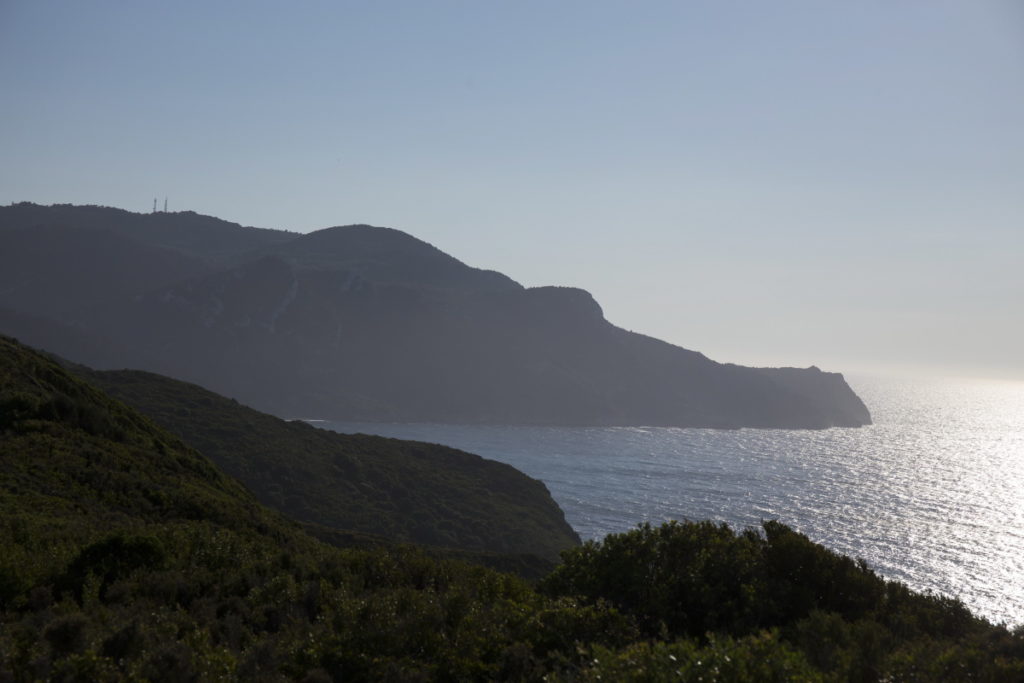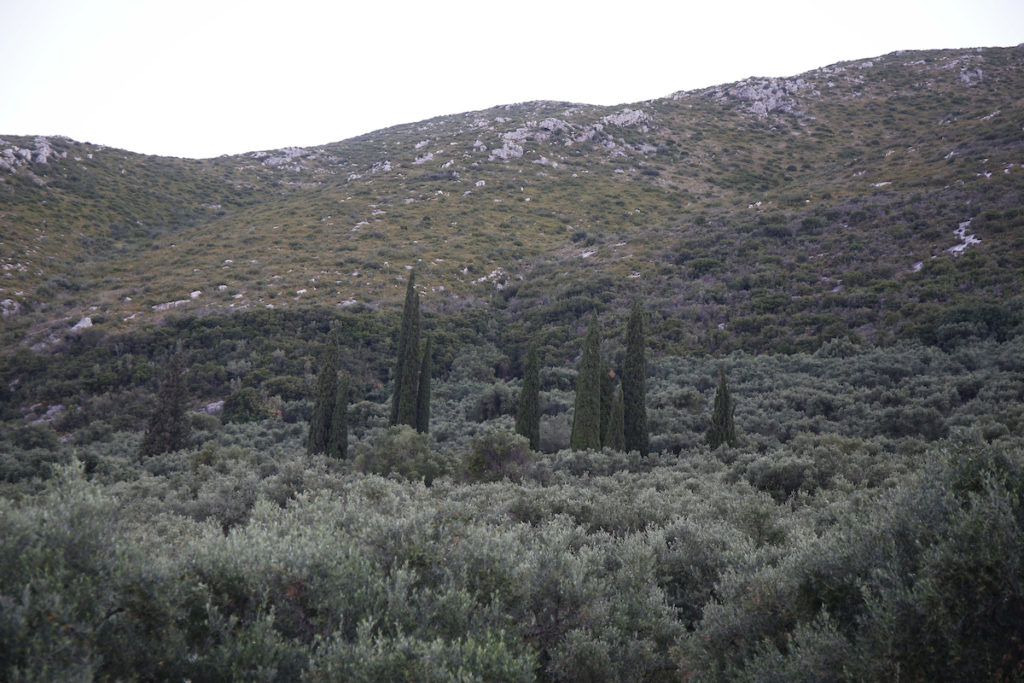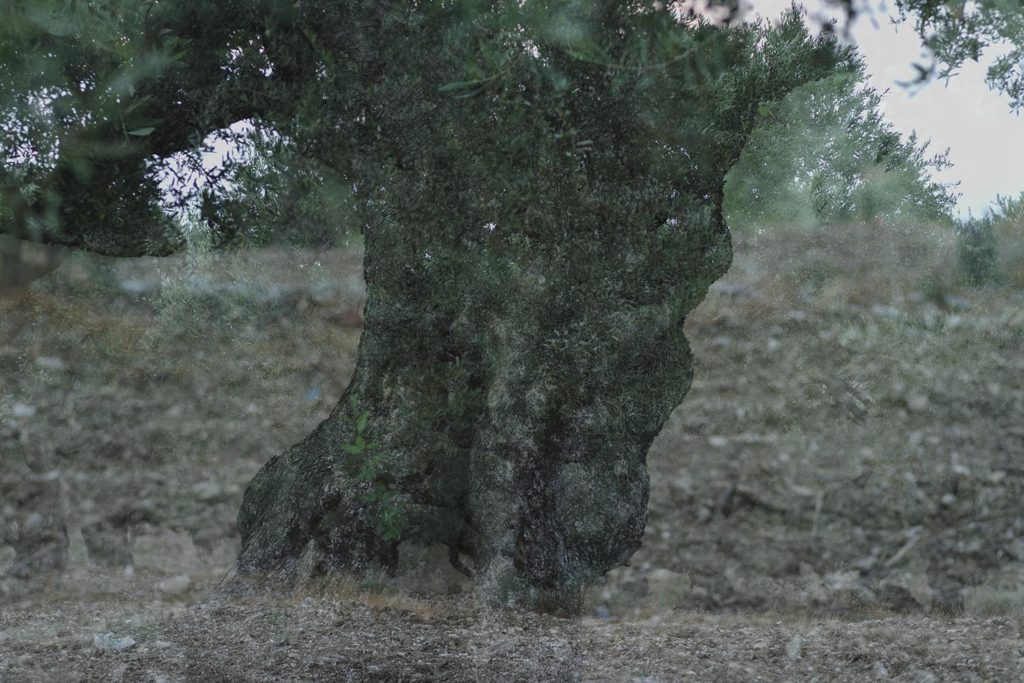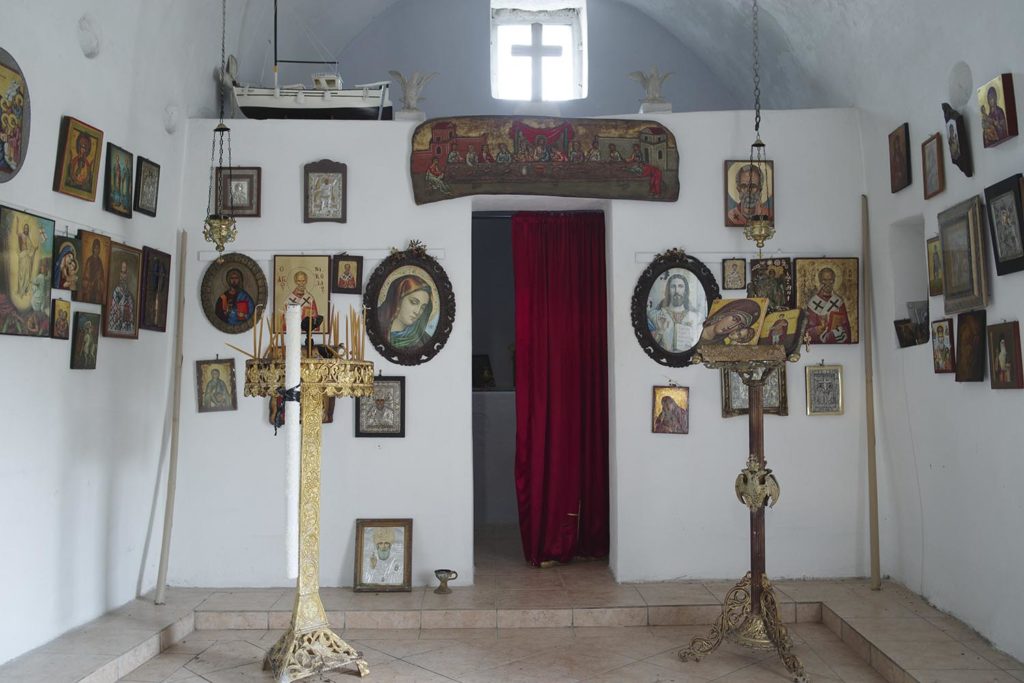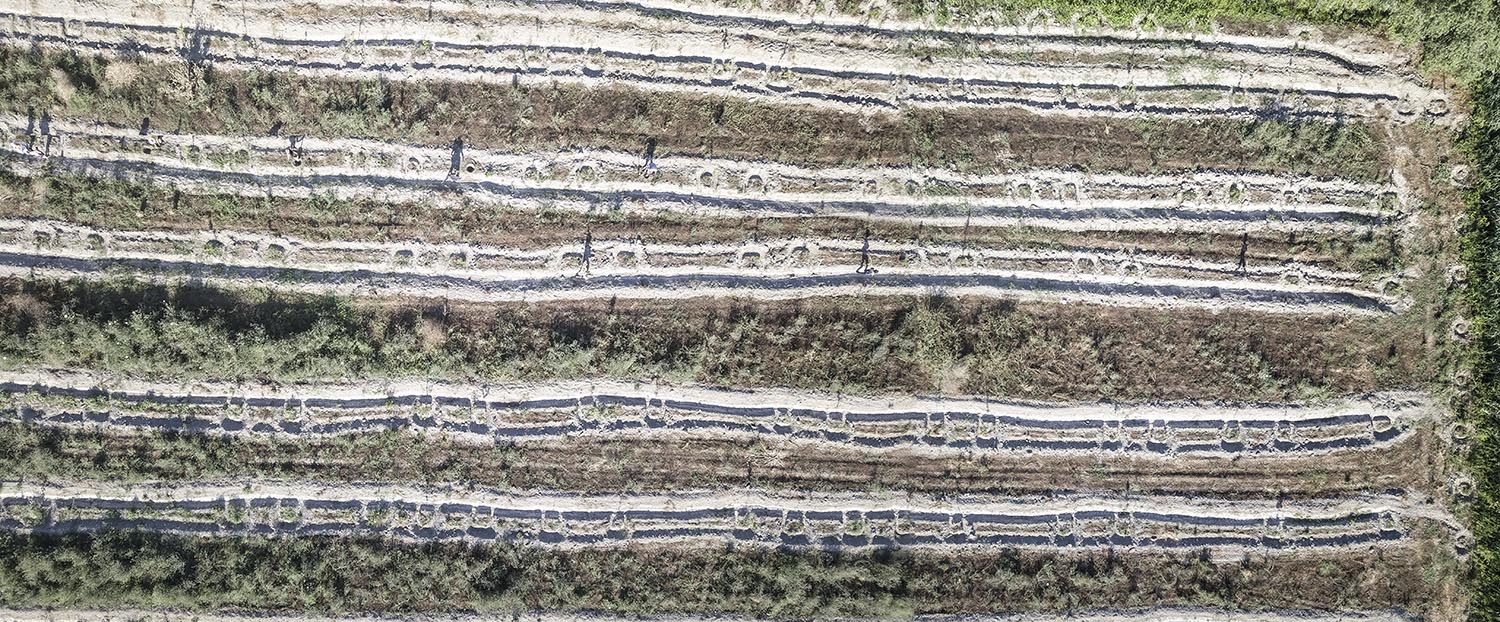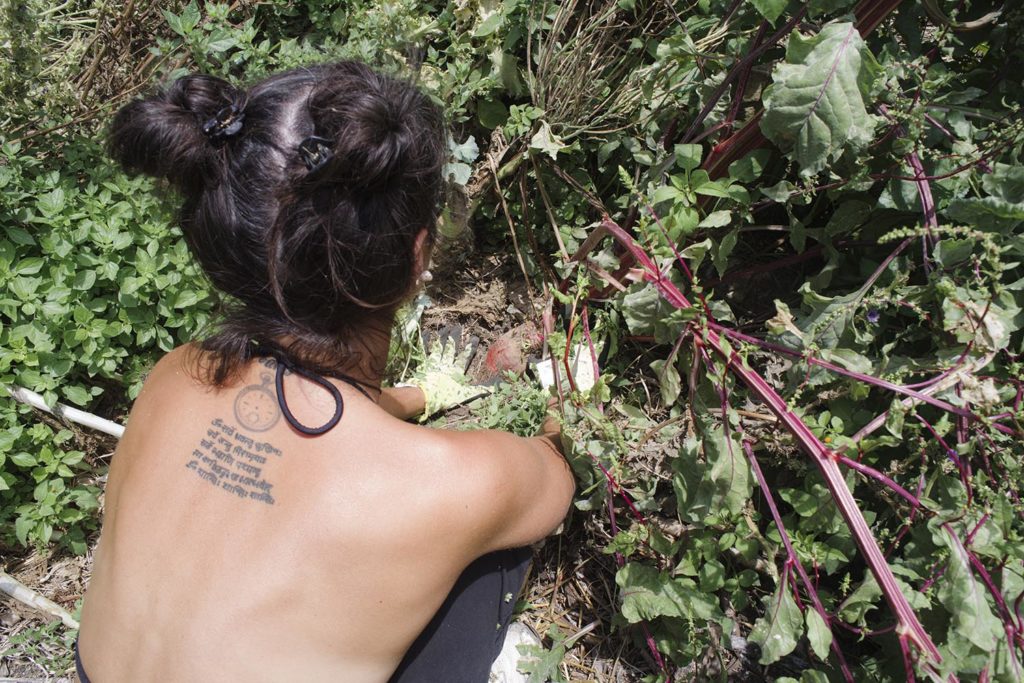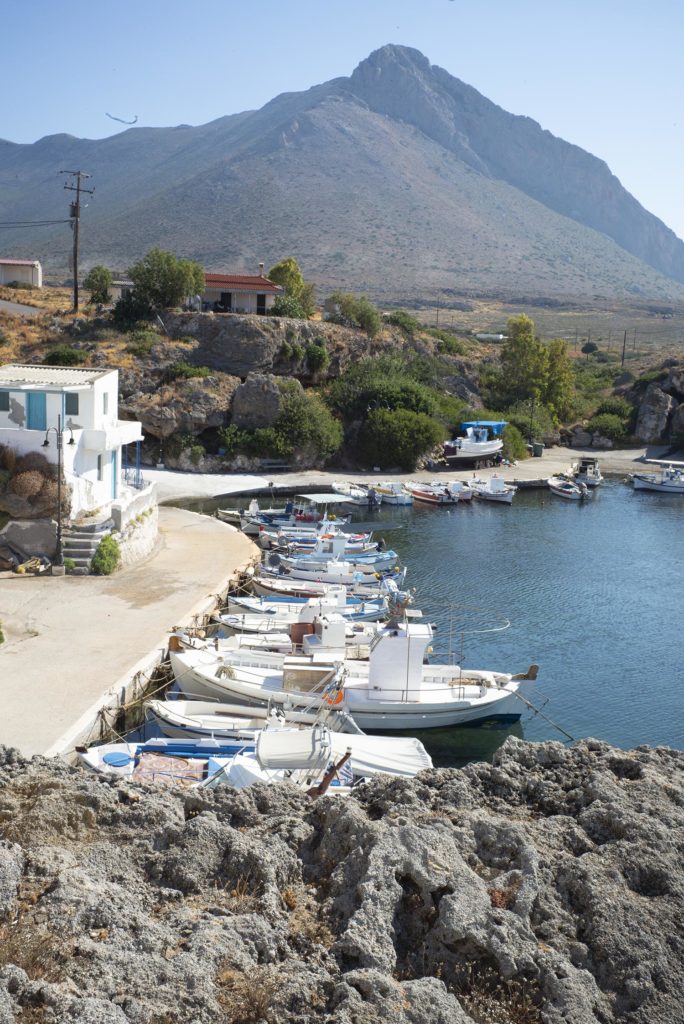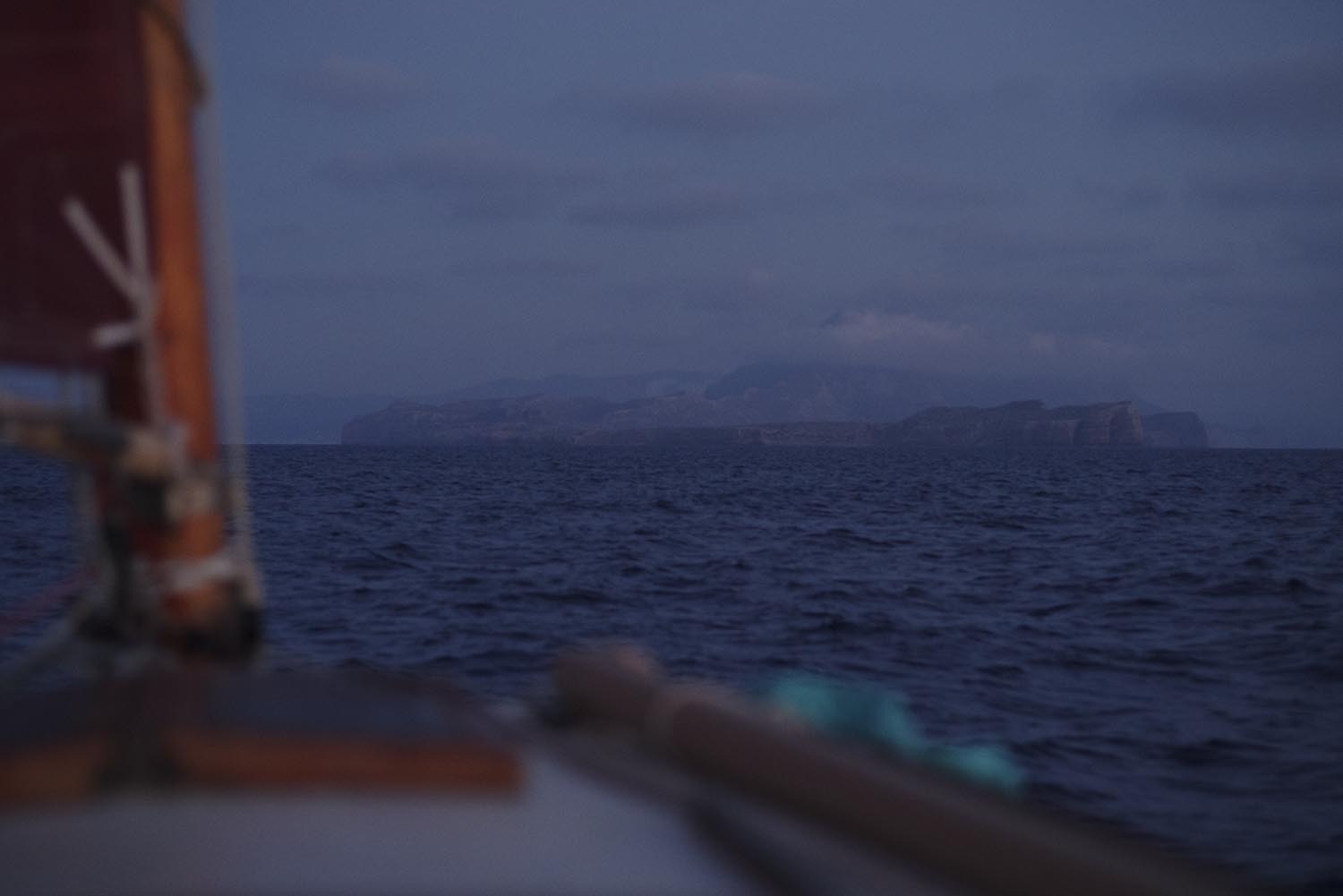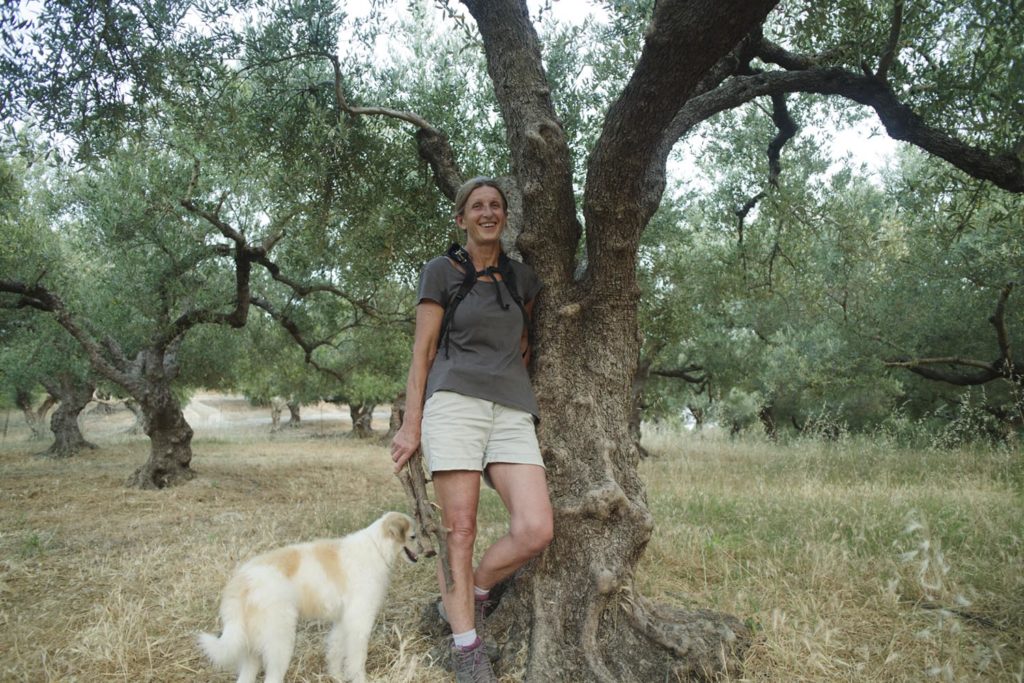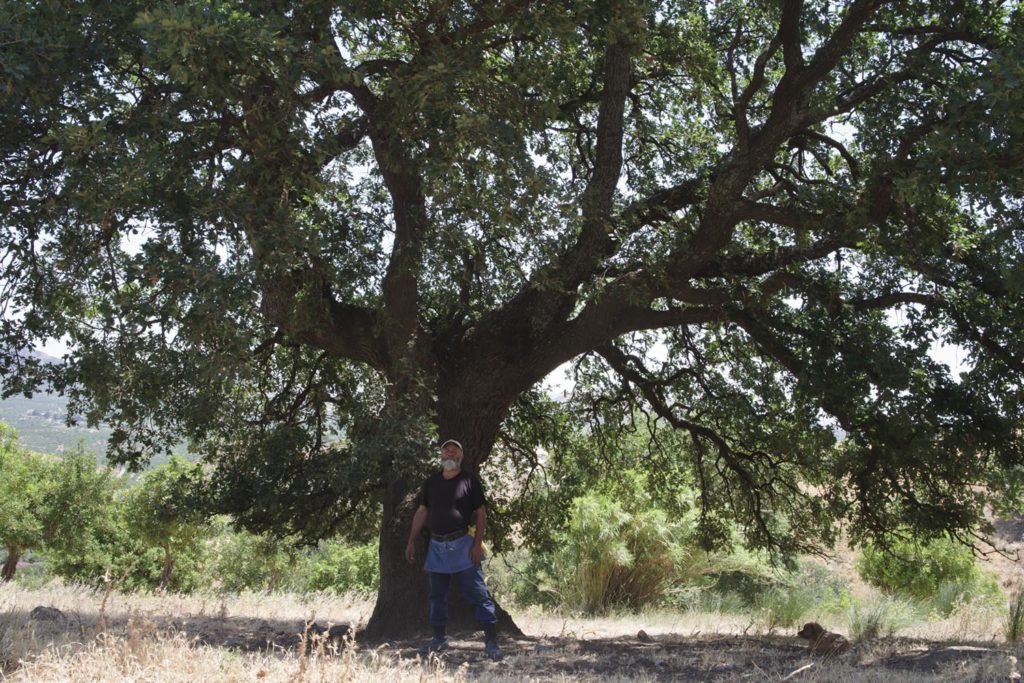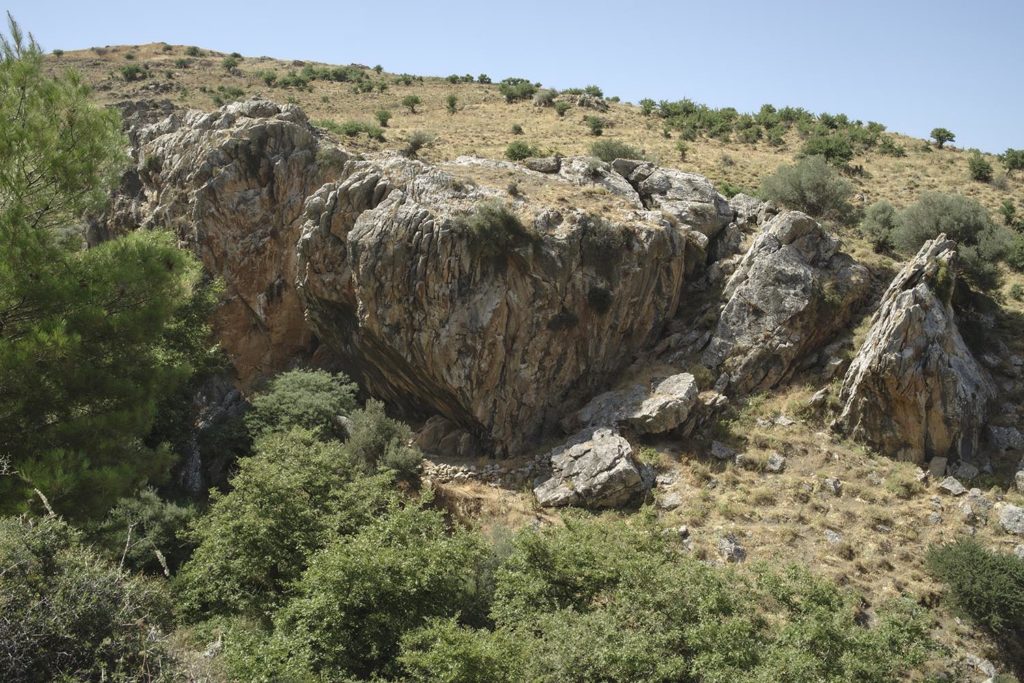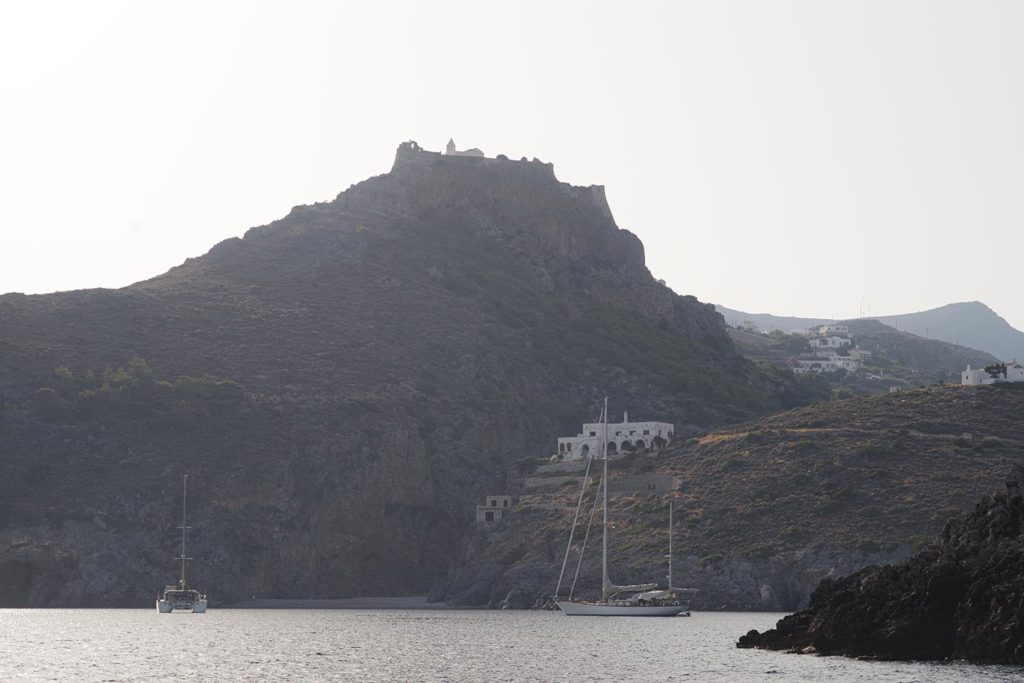Ivana Petan(the author of the story),
actively participated in the project many times and in many ways, from the very beginning and even before, helping to restore the boat, Nalu, that we are now using. She is a member of the core team. She expresses her creativity mainly in the form of ceramic art works, as well as with geomancy stone installations group projects.
As an artist, she participated in three MedLand-related exhibitions (1,2,3). As an expert in geomancy, she did her part in the story: a discourse with the island of Ikaria. On our 2021 trip, she did the entire observation of the places we visited. Her observations have left a strong mark, since so much is changing in the way we experience and bring into awareness our relations, especially with the land. The title of the project (MedLand) is about the land – the potential of the land, small or big, or the entire Mediterranean that changes through periods, along with our perceptions and relations with all other conscious life. Ivana's interactions go beyond, like looking behind the curtain :-))

Ivana Petan & BBimages
The present writing is a trace of this years' MedLand project. Visits to the agro-agriculture project Southern Lights in the Peloponnese, Zlatka, a Slovenian who has lived in the western part of Crete for more than 30 years and grows olive trees, and meeting a Cretan initiative for the revival of the importance of the carob tree were pre-planned. All other stops on the way connected the path into a semantic whole. The focus of this writing is not primarily on people, but rather on the natural space, seen and experienced through the eyes of geomancy. Natural space is fundamentally a free space; without names, borders, properties, coats of arms and flags, with its roots in the connection of different beings, forms, memories, wisdom, impulses, which with their unique breath co-create the harmony of life, approaching and distancing, with change as the only constant. In addition to visible physical materiality, nature also has its invisible energetic face: conscious beings who become visible through heart communication and intuition.
All writing is a personal experience of spaces I've visited: their qualities, the possibility of their connection and cooperation with each other and with humans, human contribution, and a presence of the impulse of the birth of some different world and existence in respect, co-creation and well-being of everything visible and invisible as a living whole.
The Ionian Islands. I experienced them as an energy door, a transition to the eastern part of the Mediterranean, which stimulates and significantly moves its whole. The Ionian Islands offer tempting gifts of the beauty of nature and people, of a friendly and decent life, as a lure to extend the journey to the
Aegean part of the Mediterranean,in which the rising sea depths potentiate everything else: the appearance of space, a sense of the elements, approach to life, its rules and myths that establish it, the determination and courage - not only for survival, but also for life. Due to its conditions and characteristics,living in the Aegean space of the Mediterranean requires deep perfection and awakens stronger emotions, decisions and binding promises.
However, before entering the Aegean Sea, rises another passage: the Peloponnese peninsula. A vast space of different landscapes and qualities. Although I have always respected it very much, it was only now that I slowly began to become aware of not only its width and height but also its depth. It proved to me to be the centre of the life energy of the entire Mediterranean. The Peloponnese being led me into its underworld that glows golden. Its core carries a balancing organ that appeared to me as a globe-shaped organ, incessantly dancing left-right, up-down, actively bringing and maintaining vital energy needed for power harmonization of the space, perpetually in motion. However, I sensed the blockage in the upward passage by a metal plate, and as a result, there is no cosmic impulse to cooperate with Gaia. Therefore, a balance organ is stopped in its motion, standing frozen and forgotten, speaking of forgetfulness of the crucial importance of natural space for human life, of their interdependence. Simultaneously, it awakens thinking about ways of active human change and establishing a new balance on the wings of cooperation and connection with nature, which enables respectful life of all human and nonhuman beings. I disconnected the plate and sent it into transformation into Gaia and performed a Tear of Grace for the Peloponnese. Like acid rain, a tear began to melt the metal plate. In its place, an empty white space opened up as the quality of a white goddess; of the new wholes ready to enter the red creative goddess phase.
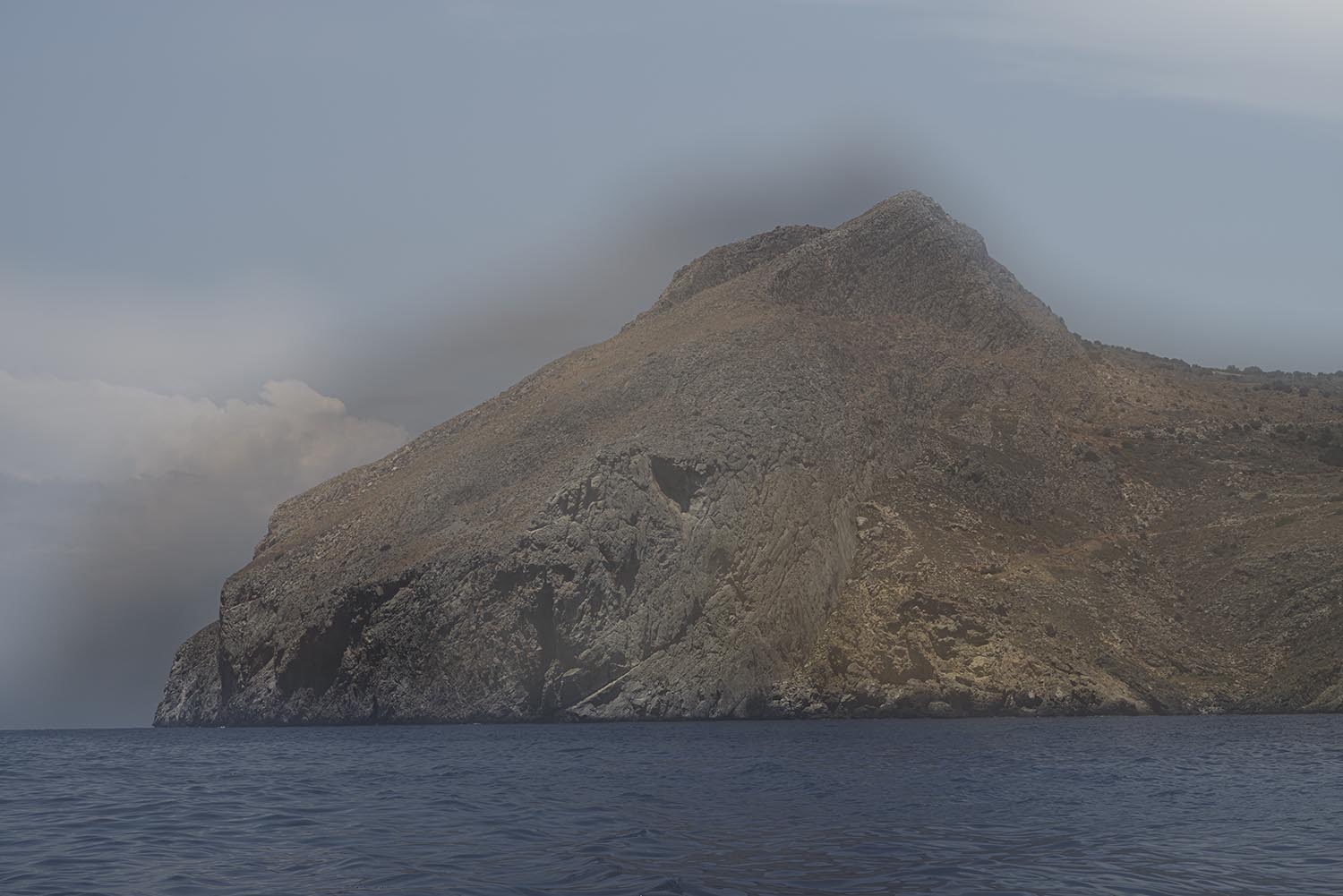
Firs finger of Peloponnese
The westernmost Greek island is Othonoi. I see it in the shape of a small dragon with its head facing southeast. It appeared to my senses as an island of joy and permission to live. I experienced it as a space of powerful impulse for the new: when old ways of life are left behind, the opportunity for new ways of understanding, communicating, acting opens up. Othonoi is sending us a message that it is possible to come into contact with the possibilities of new possibilities of dwelling and consequently to see and realize the (not-yet-embodied) potentials.
As a symbol of the quality of the island, a being with arms outstretched towards the sky (as an inverted symbol of peace or a tree) appeared in my vision.
The symbol of the quality for the whole of islands Paxos and Anti Paxos, which were next islands along our way, appeared to me in the form of a rhombus. With its sides, the rhombus opens a space of individual inner rest, of gathering within, introverted activity inside, which leads to the cleansing of outdated patterns, the clarification of desires and the formation of the intention-direction of life. As an earthquake of the inner world that gives birth to a new view, a new vision of the outer world and own individual role in it, preparing for a new path, a new cycle, and pointing to the natural rhythm of endless spiritual maturation.
The shape of the islands remain incomprehensible to me for now.
Zakynthos island awakened a range of emotions in me: from the confinement, impermeability and compression in a bag of consumerism and tourism, disconnection from the depths of the earth and the height of the sky, breathing hard due to the prevailing male principle and abuse of natural space, to the sincere contact with joyful nature in the interior of the island. In the centre of the valley in the island's middle, I sensed a spiral rising into the sky, energetically charged by four surrounding places on four sides of the island. It is strongly rising high in the sky but lacks grounding. The form of the island appeared to me as a being walking forward and looking back. And the quality of the island I recognized as knowledge to incorporate the ancestral wisdom into the present and keep it for descendants.
In the vast olive grove of a friend Dimitris Therianos(update21:film by Ida Glušič), I felt the joy and love of its cultivation. Each olive tree is connected invisibly with all others as a part of the whole, the last showing to me as the respiration system of one organism. Connecting with them, I felt the olive tree as a female tree and saw its unique feature: the olives dance! The old olive tree we last visited showed itself imbued with many times and periods. It radiated a particular mysticism, arousing awe. I experienced it as an archetype of ancestors, as a silent sage that regulates the life of an olive grove.
As a symbol of the quality of Zakynthos, a circle inside a rhombus appeared to me.
The Peloponnese peninsula has shown to me in the shape of a being with a tail that faces west, bringing in an energetic influence from the East. I felt it played the role of the centre of (primordial) life force (hara) in the Mediterranean, sending it into the wholeness through the “tail, legs and arms”. When I visualized myself in the middle of the Peloponnese, I felt strong forces from all sides, as if I were standing on a big draft, at the centre of an imbalance. It took a lot of effort to manage standing up straight. When I asked the Peloponnese about its readiness for the “new”, it was confused, perhaps even frightened, as it could not relate to the meaning of my question. Then Demeter appeared. She ritually outlined a circle around herself on the ground with the stick and hit hard in its middle. A strong spring rose from it and began to rain on the Peloponnese. Is this rain a message about the growth potential of something new?
Pylos lies on the outside of the left foot of the Peloponnese (1st toe of the Peloponnese). I experienced it in his comfortable, peaceful life, backed by prosperity present on all levels: an abundance of food, a year-round friendly climate, the absence of industry. In addition, the security of living is based on following the tradition and its successes, meaning that the question of the possibility of something new and different is unknown and never asked.
As a symbol of the quality of Pylos, the letter V appeared to me - the door of Gaia gifts into space.
In the village of Koroni, the feeling and view of the place and the port speaks to me of chaos, disorder, inaccessibility, loss of identity. I feel her ignorance of current changes in space and potentially new ways of living even more strongly than in Pylos.
As a symbol of the quality of the village, a spiral from earth to sky appeared to me.
I feel the primary energy potential of the left foot of the Peloponnese (1st toe of the Peloponnese) in the opening from the earth to the sky. Here, Gaia messages and qualities are brought into the light. However, this flow is being obstructed by poor grounding. Space is not present in the actual moment but stays in its closed world, with the heavy energies of struggle, fear and lack of freedom from the past. The space sleeps.
I feel the cape of the tail of the Peloponnese (2nd toe of the Peloponnese) as an energy pillar that expands horizontally into the environment and thus connects, collects and balances the qualities of two neighbouring capes of the Peloponnese (left and right feet of the Peloponnese). The presence of the element of air is strong, and here, for the first time since my arrival in Greece, I feel the imposing, breathtaking power of the rocks - compared to the left leg of the Peloponnese, I feel here in its tail much more primal strength.
This space is a space of a dragon of air. Along with this quality which is an aspect of the primordial strengths of Gaia, this space also breathes with the cosmos, with spiritual guidance and the influx of new possibilities of incarnations.
In the village of Porto Kagyo (on the right side of the tail of the Peloponnese - 2nd finger of the Peloponnese, we find the chapel of St. Nicholas. I read his gesture of the crossed upward index and middle fingers, and under the latter connected to the thumb and fourth finger, depicted on all the icons, as the wisdom of the embodiment of one's spiritual potential. Balancing one's fire and water quality brings the realization of spiritual potential (connection of thumb and earth quality).
As a symbol of Porto Kagyo quality, I saw a thread that descends from heaven to earth, here fertilizes with the message of incarnation, and returns to the cosmos in an arc, gifting the cosmos with new information (a new record in Akasha).
The next stop on the Peloponnese was Gytheio (deeper in the bay between Peloponnese's tail and the right foot - between its 2nd and 3rd toes, on the right side). As I connected with the city, a white goddess spinning in a circle appeared to me in the hill above it. It is not in full potential, but it does not sleep completely (like most of the Peloponnese we sailed by then).
As a symbol of Gytheio quality, I saw a spiral extending horizontally into space.
Near Gytheio is the village of Skala. In its nearness, we visited the Southern Lights, an agro-farming project. I felt their collaboration with plants as an attitude of respect for the earth. I felt the plants in their freedom, joy, contentment. They form a golden ray net that opens into space and sends out new information. The place is grounded, with Gaia and Pan participating.
I felt the impulse from the cosmos in the space of the Southern Lights project is weaker. It might be due to poor free-flowing energy, perhaps because the community rules restrict the freedom of life choices of the participants. I strongly feel the potential for developing new ways of working with plants - plants with plants and people with plants. However, its realization requires the development of individual responsible freedom that supports, preserves and enriches the well-being of the whole - in the relationship between the community people. Only as free and horizontally distributed does the energy for embodying the new have free flow at all levels.
At the entrance to the Southern Lights project grows an old eucalyptus tree. As a key, I received a purse with gold coins there, representing the potential of the project to enrich the world with knowledge about the coexistence of man and nature, to bring new and upgrade old knowledge into a different, for this time relevant whole. The realization of this depends on the freedom of creativity, on one side for nature, on the other side for community members who, by making their own decisions, cocreate with their unique contribution.
The Southern Lights project embodies the primary potential of the Peloponnese region: agro-agriculture as an intuitive exploration into the ways of encouraging forest creation by planting and combining plants grows out of respect for nature and connection with spiritual guidance embodied in new ideas of connecting and collaborating with nature. Thus, it is possible to create a new whole (white goddess) for further co-creation.
Also, we visited the land of the emerging farm of Panos and Kali, active members of the Southern Lights project. At the site of the emerging plantation, I saw a tree of life growing, and at the site of a future living-house, I felt a strong presence of the element of water.
I felt the connection of both lands with the energy threads.
Kayres village lies in the interior of the Peloponnese, at the foot of Mount Parnon at an altitude of 950m. From the Karyes name was born the name Kayratide (translation: young girls from Karyes), which originally meant local priestess dancers who every year danced a local ritual dance in honour of Artemide Karyatide. Later, this name came into use for all female sculpture supporting pillars (the most notable is Erectus on the Acropolis).
I felt Kayres as a yin area with feminine quality. We visited 2500-year-old plane trees, strong earthly giants and at the same time ethereal ones, as if invisibly touching the sky. In addition to the wisdom they carry, Ent also conveyed me their grief over neglect and forgetfulness from the people. The reason for this cessation of the coexistence of man and nature, the plane trees whispered to me, is the predominance of reason and its non-recognition of nature as a conscious being.
In front of the plane trees is the spring where the temple of Artemis once stood. I felt space as a strong golden pillar of energy connecting earth and sky.
Our way back to Gytheio high Taygetos mountains followed us all the way, with the highest peak Prophet Elijah (2405m). When I connected with him, I felt him kissing the sky.
Energetically, I experienced the right foot of the Peloponnese (3rd toe of the Peloponnese) as connected to the cosmos and the element of air. On its cape, there is the village of Profitis Illias. I experienced it as a peaceful and pure village, in harmony and silence. This silence was too quiet, communicating not of living in peace, but of sleep and isolation, of living in its rhythm and time, far removed from world reality. Here, again, I met a space that sleeps and knows nothing about the “new”.
Behind the village, there is a dragon-shaped mountain, rising boldly to the sky with its buttocks in the sea.
As a symbol of the quality of Profitis Illias, I saw a spiral descending from heaven to earth.
During our sailing to Crete, I first connected with the Peloponnese: the being of the Peloponnese thanked us and greeted us with an invitation to return. Demeter of the Peloponnese blessed us and sent us golden wheat. I then connected with Crete and felt the presence of Minoan culture and the culture of the (Neolithic) goddess.
We moored in Kissamos (former Castelli), a town in the westernmost bay of Crete. The request for a key dropped a golden anchor in my hands. When I connected with the island, it opened to me in quality that felt like some other time and origin and at the same time being in the present moment. Like a particular knowledge of the connection between the past and the present, where growth potential is coming from the old wisdom, upgraded for the present time. I felt Crete as an individual holon, grounded and unconditional. As a space of connecting hara chakra with heart chakra: a place where courageous insights, recognitions, getting to know oneself and decisions how to place oneself always include ancestors and tradition. I felt a space behind me - a connection to the causal worlds.
Connecting with the Crete being, a vague image of two feminine figures first appeared to be - a warrior and a Neolithic goddess -, as if the being was too weak to show herself clearly in her essence.

As a symbol of Crete, I saw golden threads in the shape of a pyramid-facing-up and a pyramid-facing-down. The threads ran only vertically. I got the impulse they also needed to run horizontally to connect Crete with the rest of Greece. By combing the threads horizontally and breathing back into causal spaces, bees appeared and began to fly around Crete. I asked Demeter of the Peloponnese to send the grain. Golden grain and bees met and connected on the way between the Peloponnese and Crete. Simultaneously, a Peloponnesian balance-organ woke up, moving around its axis and thus balancing the space of the Mediterranean. As if the connection of grain and bees - the Peloponnese and Crete - gave the balance-organ a power for restarting its life cycle. In this way, Crete presented to me like a womb of the Mediterranean.
After the exercises, the symbol of Crete also changed: from the point of meeting the golden threads of the lower and upper pyramid, a horizontal spiral of golden energy began to twist into space. There was also a change in the vision of the being of Crete: clearly, I saw a woman in a long golden dress with bull horns on her head, turning clockwise and sowing seeds all around her from the highest Cretan peak Psiloritis (2456m, Oros Idi mountain area).
Here in Crete, I felt an openness to the new for the first time in Greece.
Dear friend Zlatka, who hosted us for a few days, opened some exceptional natural spaces for us. story about Zlatka
Mouri is a village closest to a natural place called Island (Nisi) - its name comes from the fact that it is impossible to get anywhere from it, as there is a mountain on one side and a canyon on the other. I felt Island as a space unrelated to the notion of time we know; he lives in timelessness/omnipresence.
At the entrance to the place, there are ruins of a church, full of frescoes inside. From one of its remaining walls now grows an old carob tree. I felt the place as a place of Sofia/Christ presence, more precisely, as a place of meeting Sofia/Christ in oneself - with the potential of love, forgiveness and compassion for oneself.
Near the village of Syrikari (Sirikari) is a forest of old chestnut trees. The energetic key for entering the place was a burgundy bag with stone arrows. I experienced the space as a place of healing, health and inner peace. The chestnut tree presented herself to me as a female and cosmic tree that brings cosmic energy into space in the form of silver rain.
From Zlatka place, we continued towards the east of Crete, towards the secrets of the carob.
In the central part of Crete, we visited places and people associated with reviving the importance of the carob tree. First, we met a 1000-years-old carob tree in the Rethymno region. As I stood in her circle, she immediately accepted me into a circle of friends, thus showing her as a tree that makes friends quickly and easily. I also felt carob as a woman’s tree. When I connected with her, I saw that she feeds on the direct sun energy she stores in the fruit: the carob is a golden tree. (WGO story :Coming Back to the Carob Trees)
Every new experience of Crete was slowly disclosing it to me as a place connected to roots and ancestors and at the same time connected to the cosmos. Translated to the human body, this speaks of the connection between hara (life force) and the heart (spiritual perception). This connection awakens the potential of passionate creation and living one’s truth, not forgetting the wisdom and knowledge of the past.
At one point, connecting with a being of Crete ignited a spark in my heart. At the same time, however, I felt pressure from above that prevented the spark from glowing into the embodiment. I intuitively connected it with the (rational) existential fear, which many people solve today by ceasing traditional (self-sufficient) ways of care, focusing on owning material things, consumerism and finding a comfortable life. This possession-based life approach has revealed to me as restricting the free life flow, and as a way that closes the heart to free intuitive experiences.
Above village Melidoxori (Melidochori) in a Heraklion region lives Kostas, a master grafter of carob trees. The space of his farm and the surrounding landscape is like a vessel in which the sun is bathing. Here, heaven and earth kiss and procreate. It is a powerful yin space of abundance and prosperity that gives, gives, gives. This landscape is the womb in a different sense than the place of Komolithi in western Crete: it is the granary of Crete, where Gaia openly gives herself to all beings and thus ensures their lives.
Here again, I experienced the carob as a tree with sun fruits, as food fertilizing life with the life energy of the sun, awakening the life force. Carob is like a mother: independent, self-sufficient, with the knowledge and strength to survive without additional watering, caring for others and making immediate friendships. Carob thrives in different soil types, protects the soil from erosion, can survive on winter amount of rain and protects the space from fire.
In addition to carob trees, Kostas’ farm also includes old black oak trees that grow around the estate. They complement each other energetically: carob as yin and black oak as yang. I saw the black oaks sending energy threads to the carob trees, thus connecting and grounding them into the holon of the space.
On Kostas’ holon, there is also a big rock with dragon quality. Eagles, sunbirds, nest there. This quality of eagle also lives in Kostas. Likewise, the sun of Gaia is vibrating in the joyful, passionate, sincere, unobstructed way of Kosts’ communication, speech, attitude and response to the trees and garden, and not to forget, even in his deep need for abundant hospitality and gifts to visitors. He is embodying this unconditional giving quality that is born in this landscape.
We crossed part of eastern Crete, the Lasithi region and part of central Crete, the Heraklion region, went past Agios Nikolaos, then along the local road from Elounda to Naples and finally towards the village of Tris Ekklisies (Three Churches) in the southern part of Crete. Landscapes opened up to me in the power of the elemental world and Sidhe.
Not far from the village Tris Ekklisies we visited an old carob forest, unique in the Mediterranean. In this dry and rocky landscape, I felt that the carob loves solitude, does not long for visitors. Even without the latter, it is present, complete and self-sufficient. Here I strongly felt Sidhe living next to people in their invisible reality of a parallel world. Hidden, they are waiting for the awakening of people, for their realization of nature as a conscious being ready to participate in co-creation.
On the way back from Crete to the Peloponnese, we stayed overnight on the island between them, Kythira. I felt it as an island of hospitality, tolerance, peace and lightness between the two powerful spaces of the Peloponnese and Crete. A being of the island appeared to me like a woman spinning with open arms, happy, content, smiling, reconciled to herself and all that is; integrating and caring for every being that comes along.
As a symbol of the quality of Kythira, sea waves appeared to me.
The main lesson of this travel through Greece I may condense in the sentence: "Instead, as an animal, let give ourselves a possibility to live as a plant." It comes from olive, chestnut and carob. I felt plants connect into one organism. They cooperate and support each other without fear of being left without free space and opportunities for life. They do not build cohesion on equality and through supporting the same paths, forms, characteristics, but on complementing, enriching and changing the whole by supporting differences. Fluidity and the freedom of growing each being/seed into its unique plant are encouraged. In this way is each time created a new unique whole. The interconnectedness and cooperation in nature become visible to the human heart because the heart connection recognizes the plant not as a dead thing for human management, but as a conscious being, open for cooperation and co-creation. The world of plants is teaching me that space truly lives in its potential only if its beings are interconnected and at the same time independent, sincerely supporting the well-being of the whole. For only as a part, they exist and are themselves able to grow.
The coexistence of natural space with people and people with people, seen and felt on this Greek trip, was often opposite of the latter. I felt the absence of integration replaced by fencing and isolating identities without being aware of the need for connection and cooperation. Above all, bare rational conception and action have once again proved to be the general activator of human oblivion of the natural (organic) way of coexistence lived by the plant world. View on monocultural cultivation of olives, planted geometrically in flat rows in an otherwise varied Cretan landscape, felt strongly unnatural. Trees of almond, carob, citrus fruit and other variety that once had their place among olive ones, have long been cut down. An experience of seeing monoculture olive groves, in reality, showed me the consequences of human recourse to primary rationality. The accumulation of individual property and the restriction of the free flow of energies at all levels causes instead of trust only reign of fear, instead of a varied and unmanageable horizon just a pure and monotonous vertical visibility.
Visited Greek islands mostly live and function as closed worlds. At the beginning of our journey, the inner seeing of the sea space of the Mediterranean, where we intended to sail, was revealed to me as connected with golden threads, which - as I can conclude now - remain hidden and unlived. Isolated - both spaces and people - thus lose the possibility of connecting into mutually supporting waves of a unique rhythm of exchanging experiences and creating something synergistically larger. And, does not the current state of the world encourage us to make such changes?
This non-recognition of the whole, which is created by connecting different approaches, ideas and professions, I experience as an obstacle for opening new individual paths of understanding and working into the highest good of the whole, which means the highest best of each of its parts in its uniqueness.
The path I see is a balance of heart and mind in their authentic qualities and roles, offering humans a friendship and cooperation with nature, with Mother Gaia. I experience Gaia as already transforming and inviting people to recognize her by deviating from the old understanding of the world. Should we join her with confidence on the way to the new, despite not knowing what and how it will be? Human ignorance has no power to stop Gaia's changes, but it prevents them from seeing them and establishing an inner relationship with them.

And how did everything I experienced affect me? Due to the felt drowsiness, disbalance and absence of the space itself, I, a lover of Greece, was impressed by the sadness and awareness of the powerful changes that should take place. Powerful breakthroughs of the living presence of the space itself were too rare this time. As if human ignorance of the current state and unwillingness to make internal decisions about individual path have left a deep fog on the natural space and hidden from us its rebirth, its breathtaking beauty and strength. However, I also understand this “absence” of natural space feeling within me as an invitation and an incentive for change. These feelings of inconsistency did not silence my desire to explore even more deeply the spaces touched this time in their hiddenness. They also triggered my innerness for dissection and insight of everything that still needs to go into the process of transformation, forgiveness, and change, learning to be a student of the plant world.
Support the publishing of the next story!
Released by MED Land project, June 2021 /story by Ivana Petan , photo/editing: BB;


















